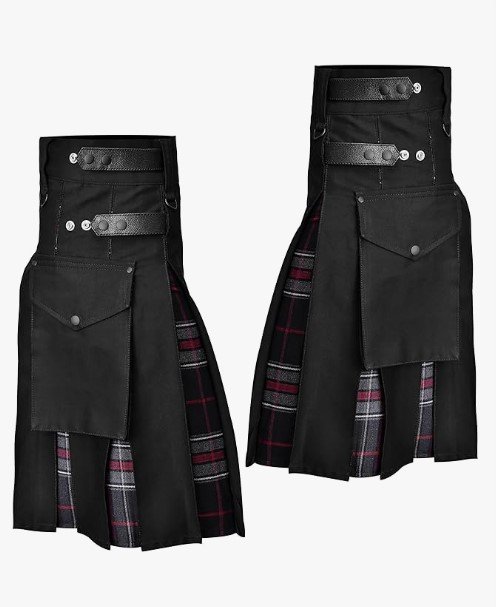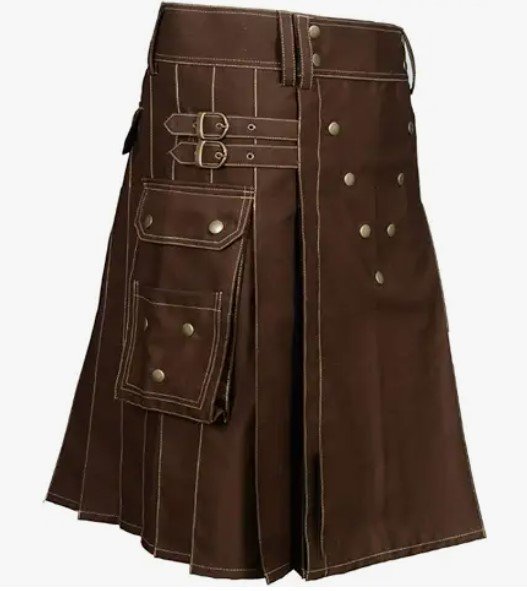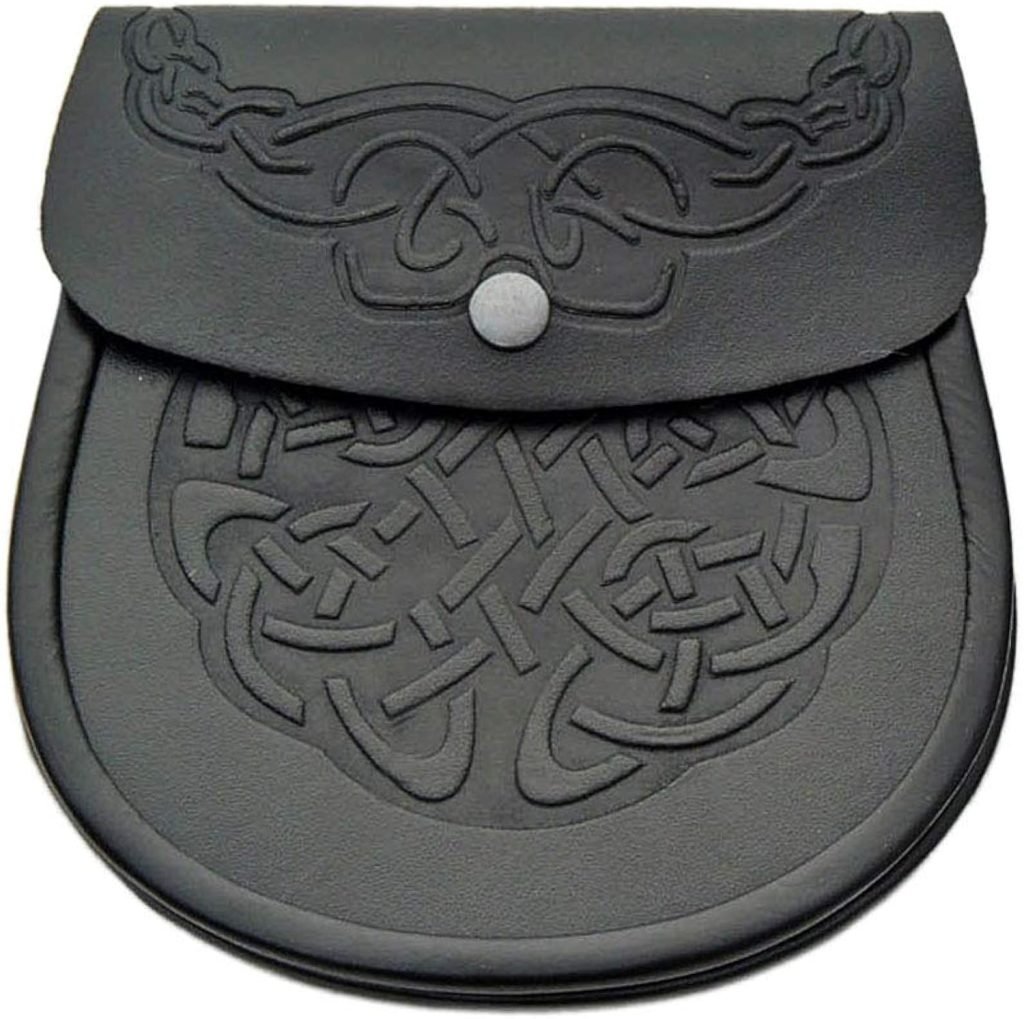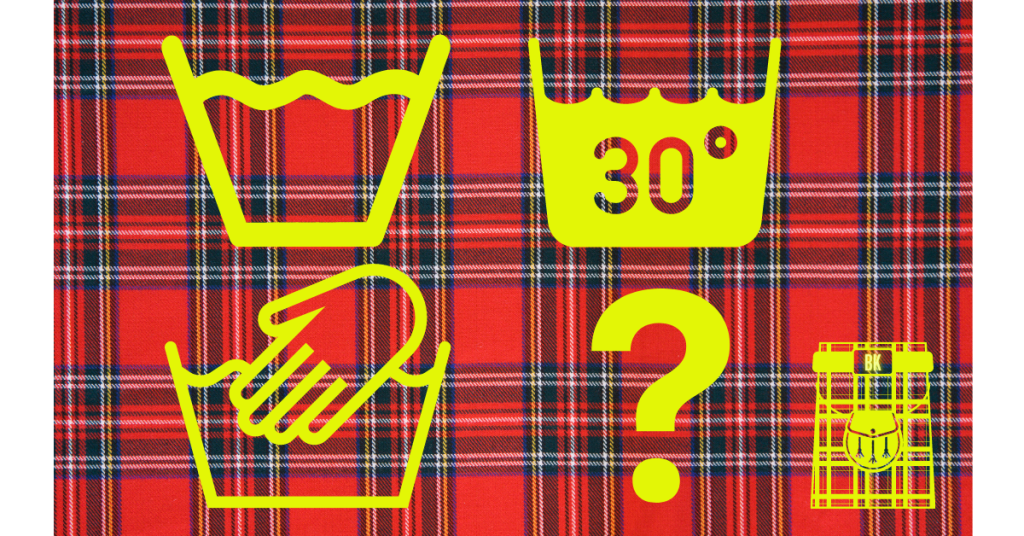So, you’ve decided to buy your first Kilt, huh? Well, get ready to embark on a journey filled with plaid patterns, proud traditions, and a touch of Scottish charm. Whether you’re attending a Highland Games event, embracing your Scottish heritage, or simply looking to add a unique garment to your wardrobe, buying your first Kilt can feel like stepping into a whole new world.
But fear not, brave Kilt-seeker, because in this beginner’s guide, we’ll walk you through everything you need to know about purchasing the perfect Kilt for you. From understanding the different types of Kilts to finding the right measurements and ultimately making a choice that suits your style and budget, we’ve got you covered. So, let’s strap on our sporrans and dive into the fascinating world of Kilts!
Understanding the Purpose of a Kilt
The Kilt is a traditional Scottish garment that holds historical significance and cultural importance. Understanding the purpose of a Kilt goes beyond simply wearing a piece of clothing; it involves embracing the heritage and traditions associated with it.
Historical significance of the Kilt
The Kilt has a rich history that dates back centuries. It originated in the Scottish Highlands and was initially worn as a practical garment by Highland clans. It provided freedom of movement and protection against the harsh climate of the region. Over time, the Kilt became a symbol of Scottish identity and pride, representing the rich culture and history of Scotland.
Common occasions for wearing a Kilt
Wearing a Kilt is often associated with special occasions and events that celebrate Scottish culture. Traditional Scottish weddings, Highland games, and formal gatherings like ‘Ceilidhs’ are all typical occasions where Kilts are traditionally worn. It adds a touch of elegance and honors the heritage of the wearer.
Modern uses of the Kilt
While Kilts are often seen as formal attire, they are also finding their place in contemporary fashion. Many individuals choose to wear Kilts as a personal expression of style, embracing the uniqueness and versatility of the garment. Kilts can be worn casually for everyday activities, festivals, or even as a part of alternative subcultures like steampunk. The modern Kilt is a fusion of tradition and individuality.

Distinguishing Different Types of Kilts
Kilts come in various styles, each with its distinct features and origins. Understanding the differences between these types of Kilts can help you choose the one that best reflects your personal style and suits the occasion.
Traditional Scottish Kilts
Traditional Scottish Kilts are made from heavy wool and feature intricate tartan patterns. They are often associated with specific Scottish clans, representing their family heritage. These Kilts are usually pleated at the back and are worn with a Sporran, Kilt Pins, and other traditional accessories.
Contemporary Kilts
Contemporary Kilts offer a modern twist on the traditional design. They are often made from lighter fabrics such as cotton or denim and feature unique patterns or alternative construction methods. Contemporary Kilts have gained popularity among individuals who want to embrace the Kilt’s style while incorporating their own individuality.
Utility Kilts
Utility Kilts are a practical variation of the traditional Kilt, designed with functionality in mind. They often have additional pockets, adjustable waistbands, and durable fabrics like canvas or leather. Utility Kilts are popular among those who want the freedom of mobility and the convenience of extra storage.
Irish Kilts
While Kilts are predominantly associated with Scottish culture, Ireland also has a rich history of Kilt-like garments known as Irish Kilts. These Kilts are typically made from solid-colored cloth and are often worn by Irish pipe bands or as a symbol of Irish heritage. Irish Kilts have a distinct look but share similarities with their Scottish counterparts.
Choosing the Right Tartan
The tartan pattern is an essential aspect of the Kilt, representing the wearer’s heritage or personal style. Understanding the concept of clans and tartans, as well as exploring different approaches to choosing a tartan, can help you make an informed decision.
Understanding the concept of Clans and Tartans
Clans are social groups that have historically played a significant role in Scottish society. Each clan has its unique tartan pattern, consisting of specific colors and weaving patterns. Historically, tartans were used to identify different clans on the battlefield. Today, they serve as a symbol of family heritage and loyalty.
Finding your family’s Tartan
If you have Scottish ancestry, finding your family’s tartan can be a meaningful way to connect with your heritage. Many resources, such as websites, books, or genealogy services, can assist in identifying the tartans associated with your family name. If your family does not have a specific tartan, you can opt for a district tartan representing a geographic region associated with your ancestry.
Choosing a universal Tartan
If you do not have a specific clan affiliation or simply want to embrace Scottish heritage, you can choose a universal tartan. Universal tartans are designed to be worn by anyone and often feature classic patterns and colors that represent Scotland as a whole. These tartans are versatile and can be worn on various occasions.
Customizing a personal Tartan
For those seeking a truly unique and personal touch, it is possible to create a custom tartan. This involves designing a specific pattern and color scheme that reflects your individual taste, interests, or personal story. Custom tartans can be registered and become an official part of the tartan registry, ensuring a lasting legacy for future generations.
Ensuring the Correct Kilt Size
Finding the right Kilt size is crucial for both comfort and style. With proper measurements and consideration of Kilt length, you can ensure a perfect fit that allows you to move with ease.
Measuring your waist
To determine your Kilt size, you need to measure your waist correctly. Use a flexible tape measure and wrap it around your waist at the navel level. Ensure that the tape is snug but not too tight. The measurement in inches will help you select the appropriate Kilt size.
Choosing your Kilt length
Kilt length plays a significant role in the overall appearance and comfort of the garment. Traditionally, Kilts should reach the middle of the kneecap when standing upright. However, personal preference and occasion may influence the choice of Kilt length. It’s essential to consider the balance between style and practicality when choosing the appropriate length.
Sizing for a comfortable fit
Kilt sizes typically correspond to standard trouser sizes, but it’s essential to remember that Kilts have a different fit and feel. When purchasing a Kilt, it’s recommended to consult the specific sizing guide provided by the manufacturer or retailer. Taking accurate measurements and considering individual body proportions will help ensure a comfortable fit that doesn’t restrict movement.
Deciding on Kilt Material
The choice of Kilt material impacts not only the aesthetic appeal but also the comfort and durability of the garment. Understanding the characteristics of different materials will help you make an informed decision.
Traditional wool Kilts
Wool is the most traditional and commonly used material for Kilts. Scottish wool Kilts are known for their durability, warmth, and natural water-repellent properties. They provide an authentic and classic look, making them ideal for formal occasions or colder climates. However, wool Kilts may require more maintenance and care compared to other materials.
Lightweight synthetic Kilts
For those seeking a more lightweight and accessible option, synthetic materials such as polyviscose or acrylic blends offer an alternative to traditional wool Kilts. These materials are often more affordable, easier to care for, and suitable for warmer climates. Lightweight synthetic Kilts can provide comfort and practicality while still maintaining the traditional appearance of a Kilt.
Weather considerations for Kilt material
Considering the climate and weather conditions in which you plan to wear your Kilt is essential. Wool Kilts provide excellent insulation and protection against colder temperatures, while lightweight synthetics offer breathability and comfort in warm conditions. It’s essential to choose a Kilt material that suits the environment to ensure your comfort throughout the day.

Accessorizing Your Kilt
Accessorizing your Kilt not only adds a personal touch but also completes the overall look. From sporran selection to choosing the right footwear and other accessories, there are several options to consider.
Choosing the right Sporran
The Sporran is a pouch traditionally worn around the waist, just below the Kilt belt buckle. It serves both as a functional accessory and a decorative element. Sporrans come in various styles, from simple leather designs to more ornate fur or metal embellished options. Choosing a sporran that complements your Kilt and personal style will elevate your overall appearance.
Picking Kilt socks and shoes
When it comes to Kilt socks (also know as Kilt Hose), either traditional knee-length Kilt Hose or simpler Kilt socks can be chosen. Knee-length Kilt Hose are typically worn with Flashes, decorative fabric strips worn below the knee. Alternatively, Kilt socks that reach just below the knee without Flashes provide a more casual look. Pairing the socks with appropriate footwear, such as Ghillie Brogues or dress shoes, contributes to a polished and authentic appearance.

Selecting Kilt pins and Brooches
Kilt pins and Brooches are decorative pieces that add an extra touch of style and symbolism to the Kilt. Kilt pins are typically worn on the outer apron of the Kilt, securing the layers of fabric together. Brooches, on the other hand, are often worn on the shoulder or chest and can be used to fasten a tartan sash or adorn the Kilt itself. Choosing pins and brooches that align with your personal taste and represent your heritage can be a meaningful addition to your outfit.
Other Kilt accessories to consider
Beyond the essential accessories, there are several additional options to consider when accessorizing your Kilt. Belts and buckles can be chosen to add a personalized touch or highlight specific symbols or designs. Tartan flashes can be worn with Kilt hose for added flair. Embellishments such as decorative spats or sgian-dubh, a small knife worn in the sock, can also be incorporated into your Kilt attire. Exploring different accessories allows you to express your own style while staying true to Kilt tradition.
Respecting Kilt Traditions
Understanding Kilt traditions and adhering to proper Kilt etiquette is essential when wearing a Kilt. Respecting the cultural significance of the garment ensures that you are honoring its heritage appropriately.
Understanding Kilt etiquette
Kilt etiquette involves following certain guidelines when wearing a Kilt, particularly during formal or cultural events. For example, it is customary to wear the Kilt high on the waist, allowing the pleats to hang at the back. It is also important to show respect by never wearing a tartan associated with a clan if you do not have a valid connection to it. Familiarizing yourself with Kilt etiquette will ensure that you wear your Kilt with the appropriate respect and decorum.
Kilts and formal occasions
Kilts are often considered formal attire, suitable for occasions such as weddings, gala events, or formal dinners. When wearing a Kilt to such events, it is vital to dress appropriately and accessorize accordingly. This includes wearing a full outfit, including a formal jacket, dress shirt, high-quality accessories, and polished shoes. Following formal dress codes and customs associated with Kilt-wearing will help you make a stylish impression.
Cultural appropriation concerns
It is essential to be mindful of cultural appropriation when wearing a Kilt. If you do not have Scottish ancestry or a genuine connection to Scottish culture, it is important to approach wearing a Kilt respectfully. Understanding the historical and cultural significance of the Kilt, taking steps to learn about its traditions, and embracing it authentically will help avoid appropriating another culture’s heritage.
Maintaining and Cleaning Your Kilt

Proper care and maintenance are crucial to ensuring the longevity and pristine condition of your Kilt. Proper cleaning techniques, ironing methods, and suitable storage will keep your Kilt looking its best.
Cleaning a wool Kilt
Wool Kilts require special care to prevent damage and maintain their quality. It is essential to follow the manufacturer’s care instructions, but in general, dry cleaning is recommended for wool Kilts. Dry cleaning helps preserve the fabric’s integrity and prevents shrinking or warping. However, if a wool Kilt is only lightly soiled, spot cleaning with a gentle detergent may be a suitable alternative.
Ironing and storing your Kilt
Ironing your Kilt properly is essential to maintain its pleats and overall appearance. To avoid damaging the fabric, it is recommended to use a cool iron and place a damp cloth between the Kilt and the iron. Gently ironing the Kilt in the direction of the pleats will help restore its crisp look. Proper storage is equally important. Hanging the Kilt on a well-padded hanger or rolling it neatly in acid-free tissue paper will help prevent creasing and maintain its shape.
Professional Kilt care services
For those who prefer not to handle cleaning and maintenance themselves, there are professional Kilt care services available. These services specialize in the proper cleaning, repair, and preservation of Kilts. Utilizing professional Kilt care can ensure that your Kilt remains in excellent condition and prolong its lifespan.
Where to Purchase Your First Kilt
Once you have determined the type of Kilt, size, material, and accessories, it’s time to find a reputable source to purchase your first Kilt. You have various options, both in-person and online, each with its advantages and considerations.
Visiting a Kilt shop or tailor
Visiting a local Kilt shop or tailor allows you to experience the garment firsthand and receive personalized assistance. The knowledgeable staff can help you choose the right Kilt size, material, and accessories based on your preferences and needs. Additionally, they can provide valuable advice and guidance, ensuring a high-quality purchase.
Ordering a Kilt online
Ordering a Kilt online provides convenience and access to a wide range of options. Many reputable websites specialize in selling Kilts, offering detailed product descriptions, size guides, and customer reviews. Kilts and their associated ensemble can even be bought through Amazon!
Budget considerations when buying a Kilt
When buying a Kilt, it is important to establish a budget and consider your financial limits. Kilts vary in price depending on factors such as material, craftsmanship, and brand. While it may be tempting to opt for a cheaper alternative, investing in a high-quality Kilt ensures durability and authenticity. Set a realistic budget and aim for the best quality within your means to ensure that your first Kilt is a worthwhile investment.
Wearing Your Kilt with Confidence
Once you have chosen your Kilt, fitted it correctly, and taken care of all the necessary details, it’s time to wear it with confidence and pride. Understanding the correct way to wear a Kilt, feeling comfortable in it, and connecting with Kilt-wearing communities can enhance your Kilt-wearing experience.
Finding the correct way to wear your Kilt
Wearing a Kilt correctly is essential for both comfort and showcasing its traditional look. As mentioned earlier, Kilts should be worn high on the waist, with pleats hanging at the back. Ensuring that the Kilt is securely fastened, the sporran is positioned correctly, and all accessories are appropriately placed completes the attire. Consulting Kilt-wearing guides, videos, or seeking advice from experienced Kilt wearers can help you master the correct Kilt wearing technique.
Feeling comfortable in a Kilt
Comfort is key when wearing a Kilt for an extended period. Pay attention to the fit, make any necessary adjustments to ensure freedom of movement, and choose suitable undergarments that won’t interfere with the Kilt’s comfort. Walking and sitting while wearing a Kilt may feel different initially, but with time, you will become accustomed to it. Embracing the unique and liberating feeling of wearing a Kilt will enhance your overall comfort and confidence.
Joining Kilt-wearing communities
Connecting with like-minded individuals who share your interest in Kilts can be an enriching experience. By joining Kilt-wearing communities or attending Kilt-focused events, you can engage in conversations, seek advice, and share stories and experiences. These communities provide a supportive environment where individuals can celebrate their shared passion for Kilts and learn from one another. Engaging with Kilt-wearing communities can help foster a sense of belonging and further deepen your appreciation for the garment.
In conclusion, buying your first Kilt involves understanding its historical significance, selecting the right type, material, and accessories, and embracing proper Kilt etiquette. With the knowledge and guidance provided in this comprehensive article, you can confidently embark on your Kilt-wearing journey, embracing the rich heritage and traditions associated with this iconic garment.

